Nagoya-Meshi

Discover the secrets and allure of Nagoya’s very on cuisine!
There’s a word we have in Japan ”Nagoya-Meshi”. This term is only applied to the local cuisine in Nagoya. It is characterized by a salty-sweet harmony of subtle sweetness and spices. These flavors, found neither in Tokyo or in Kyoto, have a rapidly growing number of passionate fans.
“Nagoya-meshi” is the source of Nagoya’s power!
Nagoya-meshi, which developed according to our own sense of values that differs from those of Tokyo and Osaka, has become a national trend these days. Could it be that its popularity is due not only to its deliciousness, but also to its great variety and unmatched originality? We encourage you to come try some Nagoya-meshi in its place of origin, Nagoya.
Nota
Saiba mais sobre este conteúdo em https://www.nagoya-info.jp
Unagi Hitsumabushi
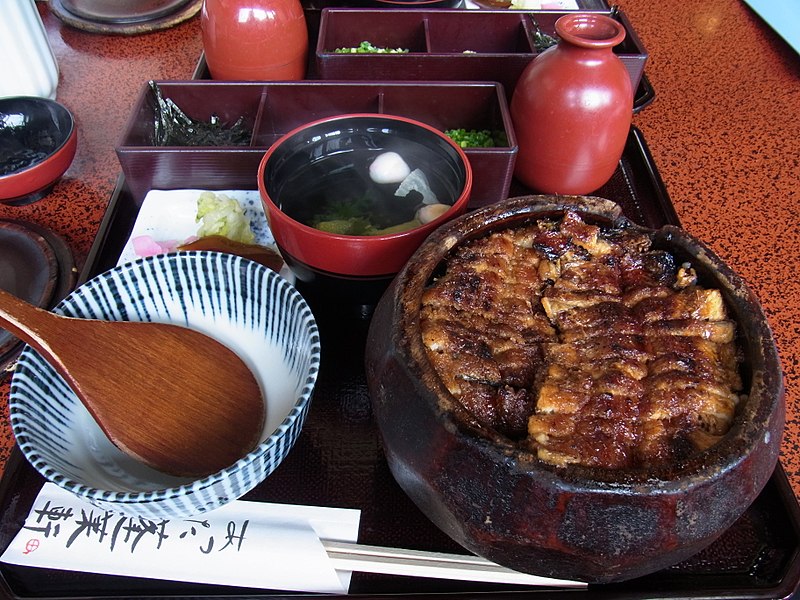
Though eel may be instantly associated with Hamana-ko Lake, Shizuoka Prefecture, its top production area is actually Aichi Prefecture. Eel is slit open along the belly and grilled whole without steaming - that’s the Nagoya style of cooking eel. Hitsumabushi is a local eel dish, which is said to have originated at the end of Meiji Era as waitresses dished up each serving of chopped grilled eel on rice from a large wooden tub for keeping cooked rice (o-hitsu) into individual bowls of customers in a tatami-mat room. The eating procedure is also unique. To begin with, the whole eel dish is divided into four portions. You put the first portion into your bowl and enjoy as it is; then you put the second helping in and put on some condiments (wasabi horseradish, nori dried laver, mitsuba trefoil, etc.) to your taste. The basic spice combination is chopped green onions, grated wasabi, and nori seaweed sheet cut into pieces, which go well with grilled eel. Enjoy the changes in tastes. Then you have the third portion in the same manner as the second portion plus green tea or broth poured over it, like o-chazuke soup with rice. And, finally, you can enjoy the remaining portion repeating one of the three methods you liked best!
Miso Nikomi Udon
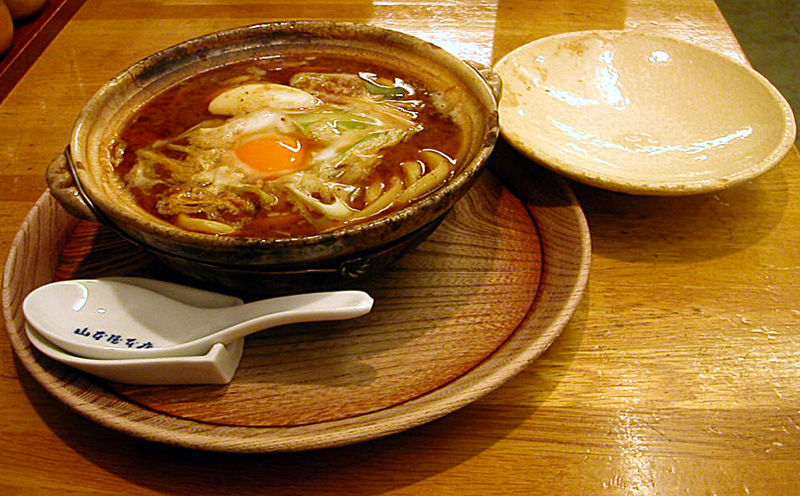
Some say the origin of Nagoya’s miso-nikomi noodle is the hoto noodle dish of Yamanashi Prefecture. During the Warring States Period, warlord Takeda Shingen used as battle food hoto noodles, which were brought from the Takeda Family to the Tokugawa Family after the demise of the Takeda clan by surviving Takeda retainers. The base is clear soup made with stock of dried bonito, shiitake mushroom, kombu kelp, and other ingredients, and the soup is seasoned with thick soy source and sweet sake. What is special about the Nagoya style is the use of haccho-miso, the salty red miso paste made only from beans without using koji rice malt. Another distinctive feature is the serving style: one serving is boiled in a small earthen pot and is served as it is piping-hot. Popular ingredients include chicken, egg, green onion, shiitake mushroom and mochi rice cake.
Tenmusu
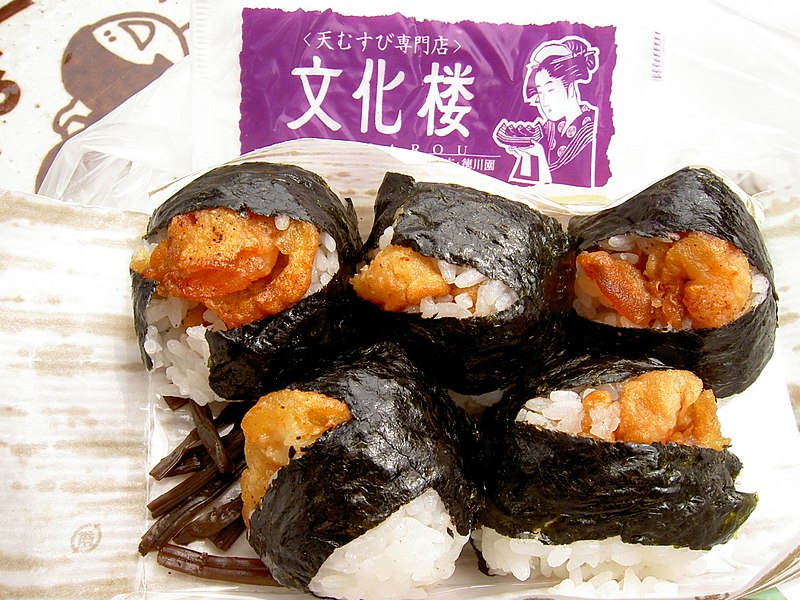
You can enjoy an original rice ball in Nagoya. Called tenmusu, it contains shrimp fritter (tempura). Tenmusu is a little smaller than a regular rice ball. The tip of the shrimp fritter can be seen sticking out from the rice ball. The rice is not seasoned with salt, but the ocean flavor of shrimp and nori (dried laver) bring about just the right saltiness. You can taste the combination of simplicity of rice balls and a little bit of luxury of shrimp. Many restaurants in Nagoya now serve tenmusu. As a simple food, the shape and taste has remained almost unchanged since it was conceived. Many shops are proud of their handiwork. Though tenmusu are highly favored for takeout, you can also enjoy them at some shops. Rather than the regular garnish of takuan (pickled daikon radish) or other pickles, tenmusu rice balls often come with kyarabuki (Japanese butterbur boiled with soy sauce).
Ogura Toast
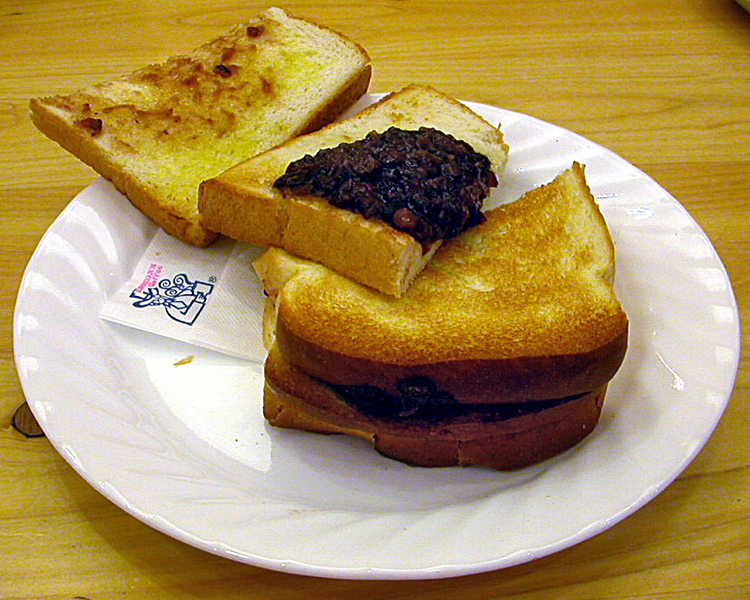
Thickly-sliced and toasted bread is dabbed with margarine or butter, and ogura-an sweet red bean paste is put on it. That is ogura toast, a kind of snack served at coffee shops. It is well known especially as part of a morning special meal at coffee shops in Nagoya. During the morning special time, your order of a cup of coffee comes with bread, egg, and sometimes salad and other foods without additional charge. Ogura toast has been one of the morning special choices for a long time. Recently, it became so popular that convenience stores sell ogura-an bread, indicating that its popularity has been spreading nationwide. There is a similar sweet bread snack combining red bean paste and margarine. This can be also regarded as an invention conceived in Nagoya.
Ebi-furai
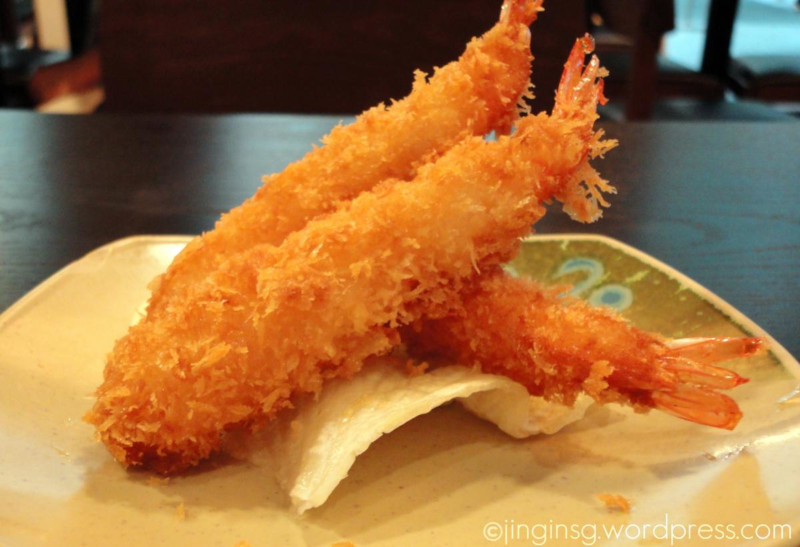
In Nagoya, you see shrimp fritters almost always as the day’s lunch special or in your boxed lunch. There is a story about how it has become a specialty food of Nagoya: The MC of a TV program, who was known to poke fun at Nagoya, once told the audience that Nagoya people pronounce «ebi-furai» as «ebi-furya»; The rumor spread around the nation, which led to the misunderstanding that ebi-furai is a specialty of Nagoya. Anyway, ebi-furai has now actually become Nagoya’s new signature food. Some coffee shops even serve shrimp fritters with bread, such as ebi-sando (shrimp sandwich) and ebi-dog (shrimp hot dog). It sure is a Nagoya-meshi (Nagoya food).
Kishimen
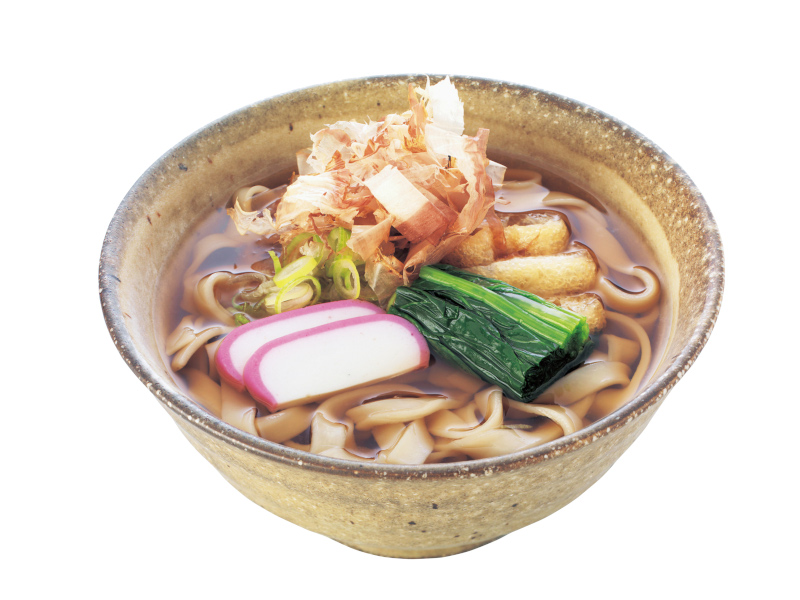
Kishimen is a broad and flat noodle often seen in the Nagoya area. When written in Chinese characters, the word literally means noodle of go stone (game pieces of Japanese chess). The broth is somewhere between the Kanto style and the Kansai style, with a touch of sweet sake seasoning. Dried bonito shavings are tossed on the dish before serving. Thinly-sliced kamaboko steamed fish paste, boiled and seasoned spinach, and deep-fried bean curd are among regular ingredients. The most accepted opinion is that noodles made in the present Imaoka Township in Kariya, Aichi Prefecture, (formerly called Imokawa in Mikawa) is the precursor of kishimen. The flat noodles produced in the area were known as the local specialty since the early Edo Period. Kiyushoran, a book written in the same period, says that that the local noodles could be the origin of so-called himokawa udon of Edo (present Tokyo). A wooden monument in Imaoka also claims that the area is the birthplace of himokawa udon. (See the rhyming of himokawa and Imokawa?) Opinions are divided about why the noodle is called kishimen. One theory is that Kishimen was originally not shaped like a noodle but like a go game stone (or the state of a ribbon-shaped noodle coiled to look like a game piece of Chinese chess), and was called kijimen (literally meaning «go game stone noodle»), which was changed into kishimen. Another idea is that people in Kishu (present Wakayama Prefecture) originally made the noodle, which was thus called kishumen (Kishu noodle) and then changed into kishimen. And finally, ther is an opinion that it was first called kijimen because the noodle dish contained kiji (pheasant) used as an ingredient when it was presented to the domain lord.
Curry Udon
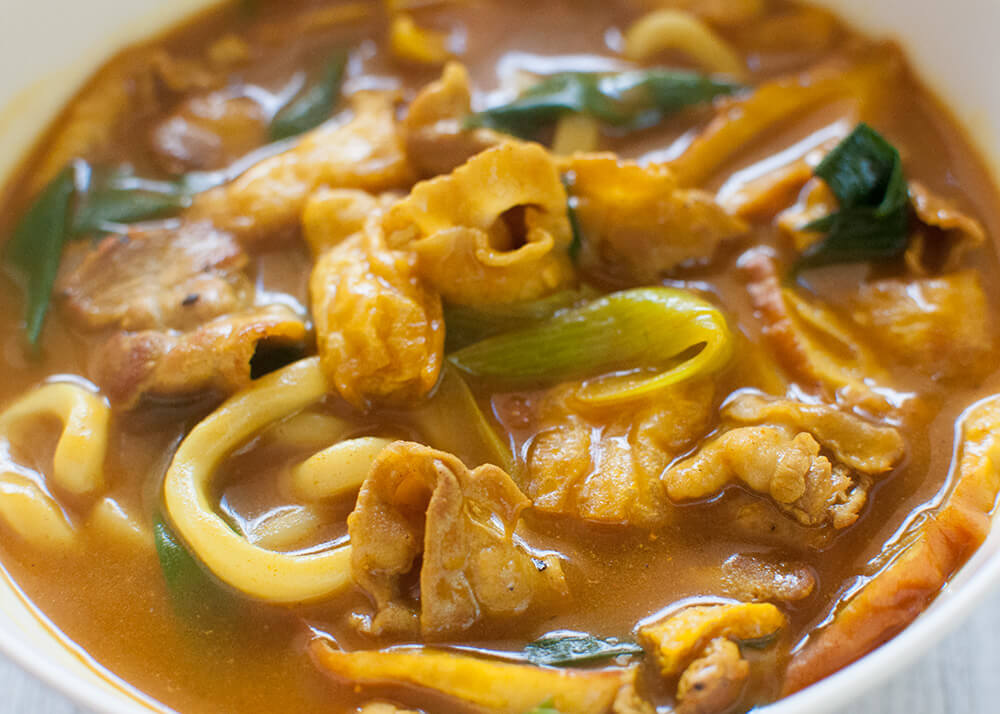
Whether working up your appetite during the hot season or warming up your body from the core during the cold season, curry udon noodles is Nagoya’s popular dish that you can enjoy year round. Restaurants compete with each other to cook better curry roux, which clings to thick noodles and makes an excellent taste. The soup is very thick, with roux and broth blending with each other in complete harmony. It is quite different from the curry udon often seen in the Kansai Region, which is just curry roux poured over udon noodles in broth. Several kinds of curry pastes are mixed in an original recipe with red pepper, black pepper and secret seasoning to add a sweet touch. The roux is sticky even though no starch is added. The curry roux is mixed with chicken broth and Japanese soup stock, and is poured over udon noodles. Not only spicy but also flavored with Japanese soup stock and chicken stock, the udon dish tastes well-balanced and delicious.
Miso-katsu
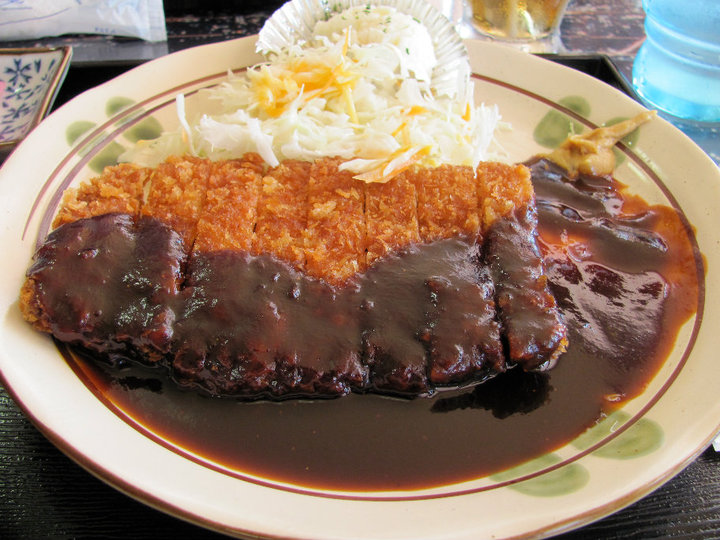
When you talk about miso in Nagoya, it means the dark-colored type made from soybeans. The aka-miso (red bean paste) is made into thick sauce by adding broth and seasonings and then poured over pork cutlet. That’s Nagoya’s specialty miso-katsu (pork cutlet served with thick miso sauce). The unique flavor and rich taste of red bean paste, which is fermented for three years, might be intimidating for a first-timer; however, as the flavor of the miso is unaffected by heat and remains even after being boiled, it is sure to become an acquired taste. Crisply-fried cutlet made of pork with salty-sweet miso sauce -miso-katsu or miso-katsu-don rice bowl is worth trying. Once you try it, you’ll never get tired of the taste, which varies with spices, such as mustard or shichimi (chili peppers mixed with six other spices) and sesame seeds. Many coffee shops in Nagoya include miso-katsu in the lunch menu. Nagoya people really love miso!
Tebasaki
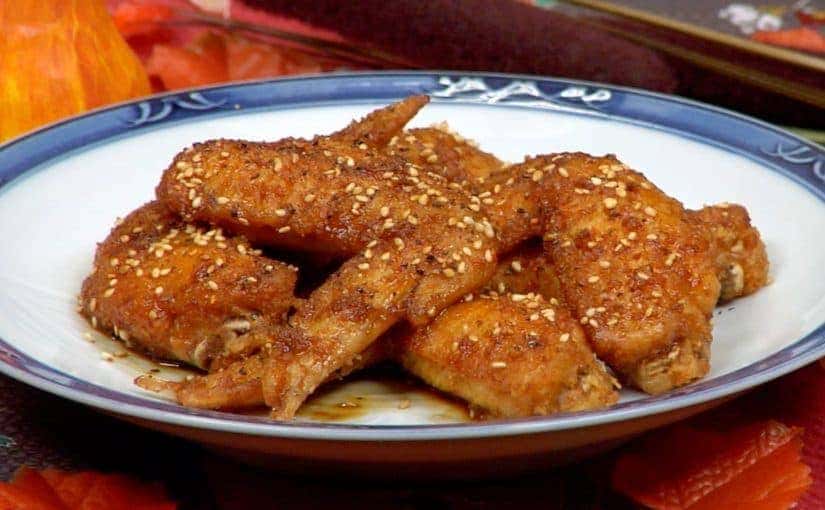
Tebasaki is deep-fried chicken wingtips. Once tasted, it is never forgotten. The spicy flavor also goes very well with beer or Sake Japanese rice wine. A tebasaki expert would eat up the wingtip by crunching the cartilage. Yet, the taste is not only for adults. Tebasaki-flavored ice cream and snacks have become available recently, and tebasaki is now a choice for take-home gifts from Nagoya. Traditionally, breast, thigh, and sasami (breast tenderloin) have been popular portions of chicken, while drumsticks and wingtips did not have much use. Only two wingtips are taken from one chicken, and they have little meat. Wingtips had little use, being used as a soup stock at best. So, they were cheap. Ordinarily, chicken is fried after being dipped in a batter of flour or potato starch. In the Nagoya style, however, the wingtips are seasoned beforehand and then fried without batter. First, wingtips are fried to 80% done at a relatively low oil temperature (about 150°c), then they are moved to a higher temperature oil (180°c-190°c) for a crisp finish. Finally, the wingtips are basted with sauce on both sides while being turned, seasoned with salt and pepper, and coated with white sesame seeds.
Miso Oden
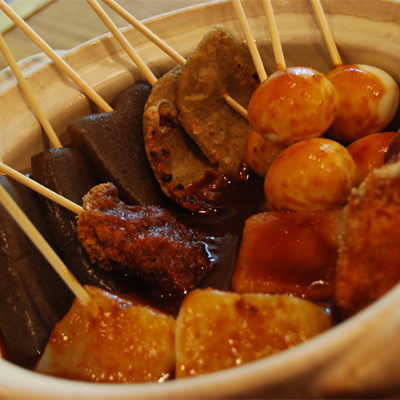
If you’re going to have oden in Nagoya, you must try miso oden — which includes Kanto-ni with just aka-miso (red bean paste) sauce added, as well as food items simmered in broth with melted aka-miso added. The sweet miso is a distinct flavor of Nagoya. The miso oden available at convenience stores also comes with mustard as well as miso.
Dote-ni and Dote-meshi
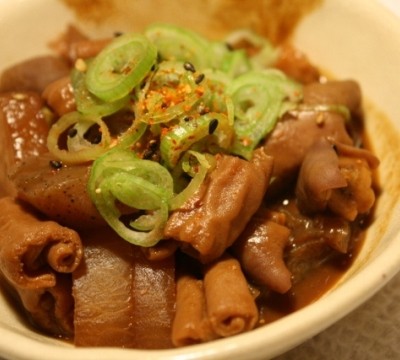
Dote-ni originated in the olden days, and began by making dote (embankments) on the edge of a pot using premium Hatcho miso, adding water, and letting it simmer to make oden. A variety of ingredients can be added, including daikon radish, beef sinew, giblets, and egg. Dote-ni can be eaten with sake or have rice added to make dote-meshi, and it is so popular it has become standard fare at pubs in Nagoya.
Taiwan Ramen
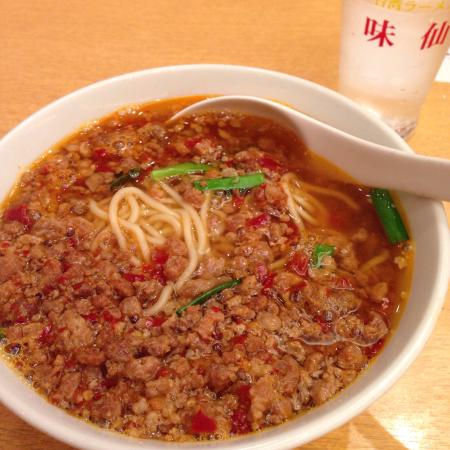
Taiwan ramen was a forerunner of the spicy food fad at first and has become a Nagoya specialty. Not only the original inventor of Taiwan ramen but also an increasing number of other restaurants now show signs saying «Taiwan Ramen». Ground pork, Chinese chives, green onions and bean sprouts are seasoned hot with red peppers and other spices, fried, and placed on boiled ramen noodles in a soy sauce-based soup. Profuse use of garlic is another characteristic of the dish, which is served mainly at Chinese and Taiwanese restaurants. Beads of sweat will dampen your brow as you try to bear the spicy heat! That’s what Taiwan ramen is all about! Though the name suggests it comes from Taiwan, actually there is no such extra-hot ramen in Taiwan. The noodle dish is a local food which was born in Nagoya and is eaten mainly in the area. The origin of Taiwan ramen is said to be an impromptu recipe a Taiwanese restaurant owner/chef conceived to feed his staff in the early 1970s. The noodle dish, something like Taiwanese danzai noodles seasoned to extra-hot, did not even have a name. When it was put on the menu at the request of regular customers, he did not come up with any particular idea and simply named it Taiwan ramen just because he was Taiwanese.
Nagoya-style Breakfasts

Coffee shops are an ingrained part of life for the people of Nagoya, and they can be seen all over the town. They are used in a variety of ways — as a place to relax, as a place to talk, and so on. Nagoya’s coffee shops excel in customer service by offering free breakfast deals, known as “morning service” in Japanese. This consists of toast, a hardboiled egg, a salad, or something similar provided free of charge with any cup of coffee purchased during breakfast hours (the exact item varies by coffee shop). Nagoya is the birthplace of this practice as well as being the birthplace of manga cafés.
Teppan Spaghetti
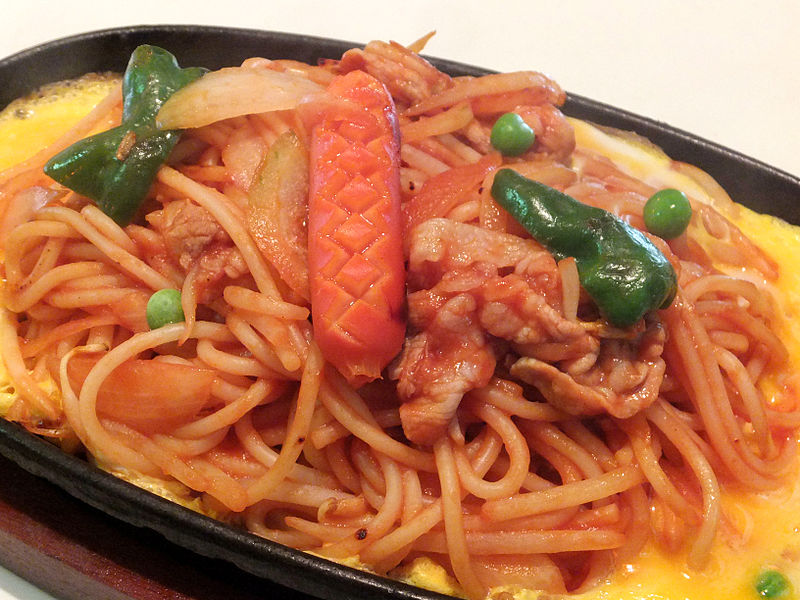
Spaghetti flavored with a ketchup-based sauce is prepared in a teppan-zara, iron hotplate, and beaten egg poured around it. Enjoyed mostly in coffee shops, rather than spaghetti restaurants. Regular ingredients include small sausages, onion, bell pepper, mushrooms and peas. Referred to as “Itarian” (Italian), “Teppan Napolitan” (Hotplate Napolitan) and “Ita-supa” (Italian Spaghetti).
Japanese confectionery
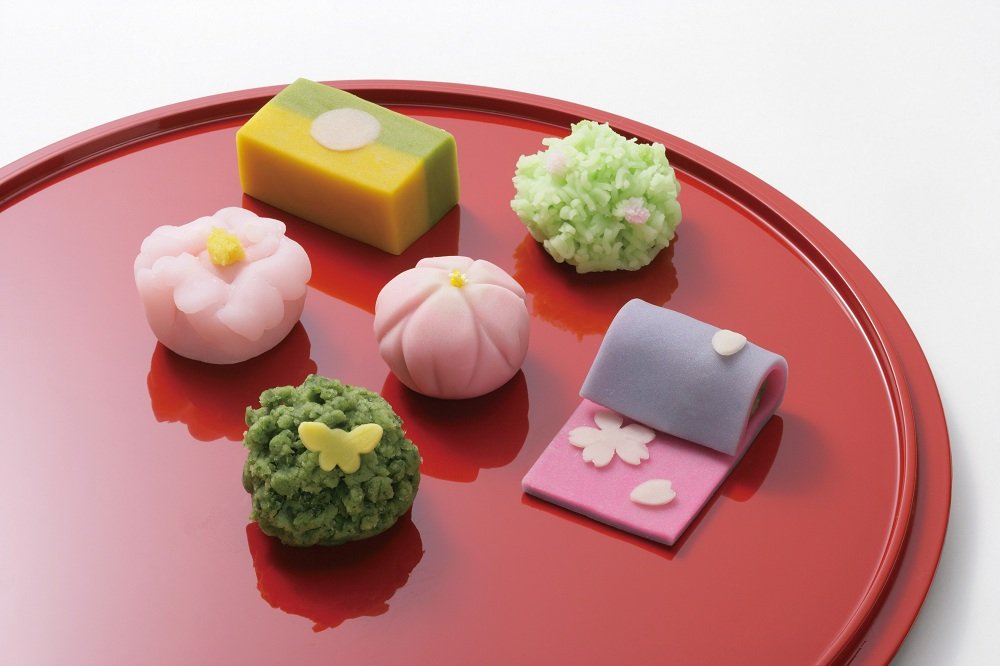
Nagoya is famous for its tea culture and history and lots of Japanese confectionery wascreated and developed along with tea. We have many different confectionery shops including traditional shops from Edo Period and small prestige stores. Beautiful and delicate confectioneries well and delicately express Japanese changing seasons.
Nagoya Cochin Chicken
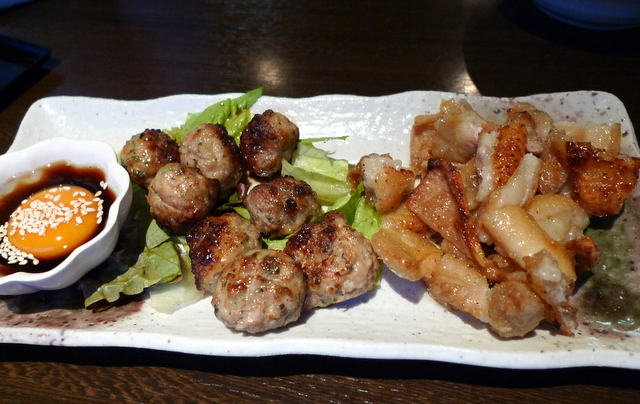
Nagoya Cochin variety of chicken was produced at the beginning of the Meiji Era by crossing a buff Cochin breed imported from China and the native breed of Owari (now the western part of Aichi Prefecture). The reddish brown plumage, which is like colored leaves of the kashiwa oak, is said to be the origin of the local appellation for chicken meat «kashiwa». The reddish meat is rich in flavor, has good chewing texture, and can be cooked in a variety of ways -sukiyaki-style chicken called hikizuri, hotpot, broiled with salt, fried with seafood, marbled, blanched and seasoned with wasabi horseradish, among others. But, of course, Nagoya people eat chicken other than Nagoya Cochin as well. Nagoya Cochin is a special treat even for Nagoya residents. Strictly speaking, Nagoya Cochin means the Nagoya breed chicken stipulated by the Poultry Farming Promotion Law, and the registered trade name of «Junkei (pure-breed) Nagoya Cochin» is the appellation allowed only for meat and eggs of Nagoya Cochin chicken produced in Nagoya and its vicinities by the members of the Nagoya Cochin Association using the breeding hens provided by the chicken farm of the Aichi Prefectural General Stockbreeding Center. Nagoya Cochin chicken is branded as a chicken breed that is good for both eggs and meat, which lays many eggs and whose meat is tasty as well, and which is now nationally known as a premier food brand.
Ankake Spaghetti
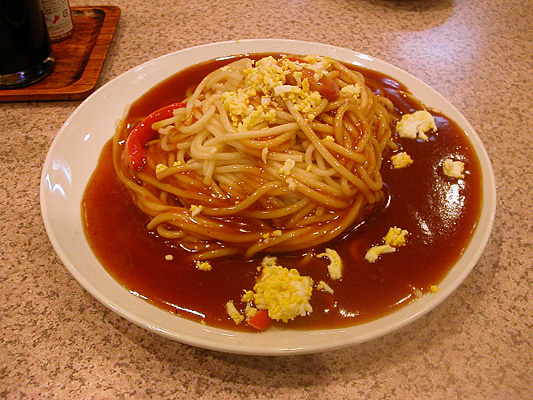
With unique sticky sauce and colorful toppings of vegetables and red wieners, ankake spaghetti is a delight also to the eye. Thick spaghetti noodles are pan-fried and topped with rich spicy sauce that is sticky like sauces of Chinese dishes. The pungency comes from liberal use of peppers. It is said to have originated during attempts to adapt meat sauce to the taste of Nagoya people. Vienna sausages, onions, and green peppers are popular ingredients. Varieties topped with piccata or ebi-furai shrimp fritter are also popular. At many restaurants, the kind made with vegetables is called «kantori (country)», those topped with meat, such as sausages and bacon, are called «miraneze (Milanese), and those with both meat and vegetables are called «mira-kan» from abbreviations of the two names.